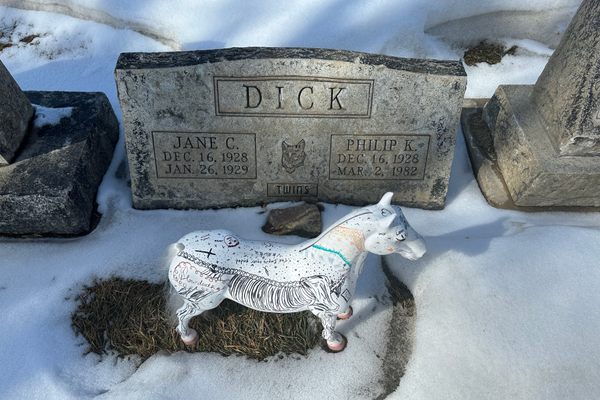About
The tomb of Mary Wollstonecraft holds a unique place in history, not just for who it commemorates, but also for its significance in the broader cultural and literary context. Mary Wollstonecraft, known as one of the early pioneers of feminist thought, left an indelible mark with her works, particularly A Vindication of the Rights of Woman.
Her tomb, therefore, stands as a monument not just to her life, but to her groundbreaking contributions to the discourse on women's rights and equality. Located in the churchyard of St. Pancras Old Church in London, her resting place became a site of pilgrimage for admirers of her work and those inspired by her advocacy for women's intellectual and social emancipation.
Moreover, the tomb's uniqueness is further accentuated by its connection to her daughter, Mary Shelley. The young Shelley would visit her mother's grave often, and on these grounds that she frequently met with Percy Bysshe Shelley, a key figure in her life and in English Romantic literature.
This meeting at Wollstonecraft's tomb not only highlights the personal link between the two Marys but also symbolizes the passing of intellectual and literary torches across generations. The tomb, therefore, is not just a memorial, but a testament to the enduring influence of Wollstonecraft's ideas, echoing through her daughter's iconic work, Frankenstein, and beyond into the fabric of modern feminist thought.
Not only Mary Wollstonecraft, but also her husband William Godwin (Mary's father) and Mary Jane Clairmont (Godwin's second wife) are memorialized on the tomb and were all buried here. When Mary Shelley died, it was her wish that she be buried near ner parents. However, instead of burying her in Old St. Pancras, her son moved the remains of Mary Wollstonecraft and William Godwin to Bournemouth (where he lived) and interred them near Mary.
Related Tags
Know Before You Go
St. Pancras Gardens was also used as a photoshoot for The Beatles' White Album in 1968. Don McCullin photographed the musicians sitting on a bench that is located near The Burdett-Coutts Memorial Sundial.
Just east of Mary Wollstonecraft's headstone lies the rather ornate tomb of Sir John Soane, proprietor of Soane's Museum. Purportedly, the design of Soane's grave was the inspiration for Sir Giles Gilbert Scot's model for the iconic red phone box. Giles' father was none other than George Gilbert Scott, the architect of the nearby St. Pancras International Hotel.
Another person buried in Old St. Pancras with a Mary Shelley connection: John Polidori, who was staying with Byron in Lake Geneva and so was present for the birth of Mary's novel Frankenstein. (His tomb was removed when the railway was expanded behind the current park area.)
Community Contributors
Added By
Published
February 15, 2024





































